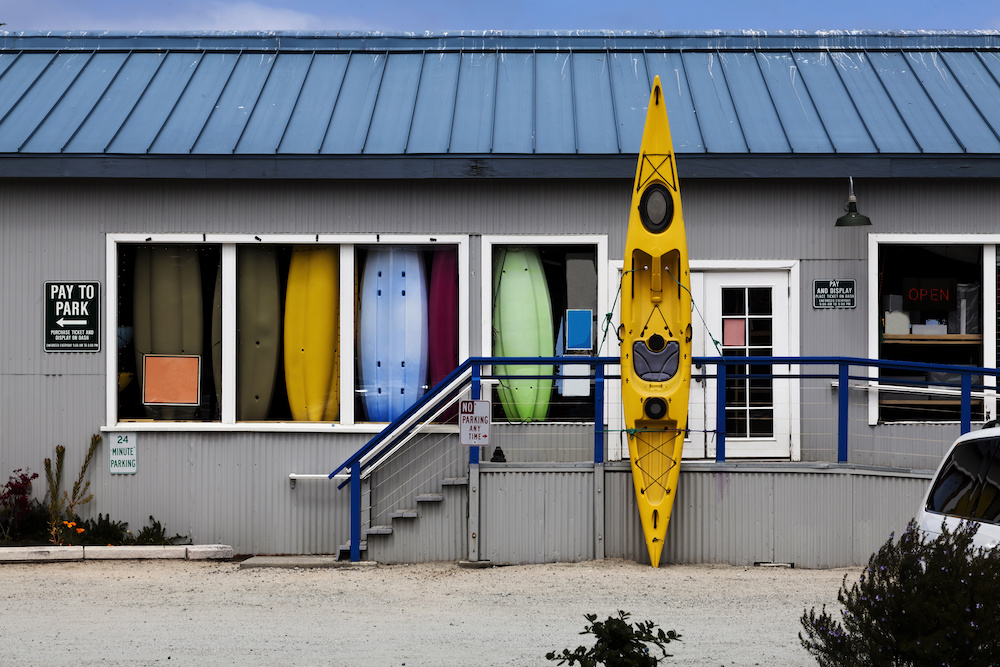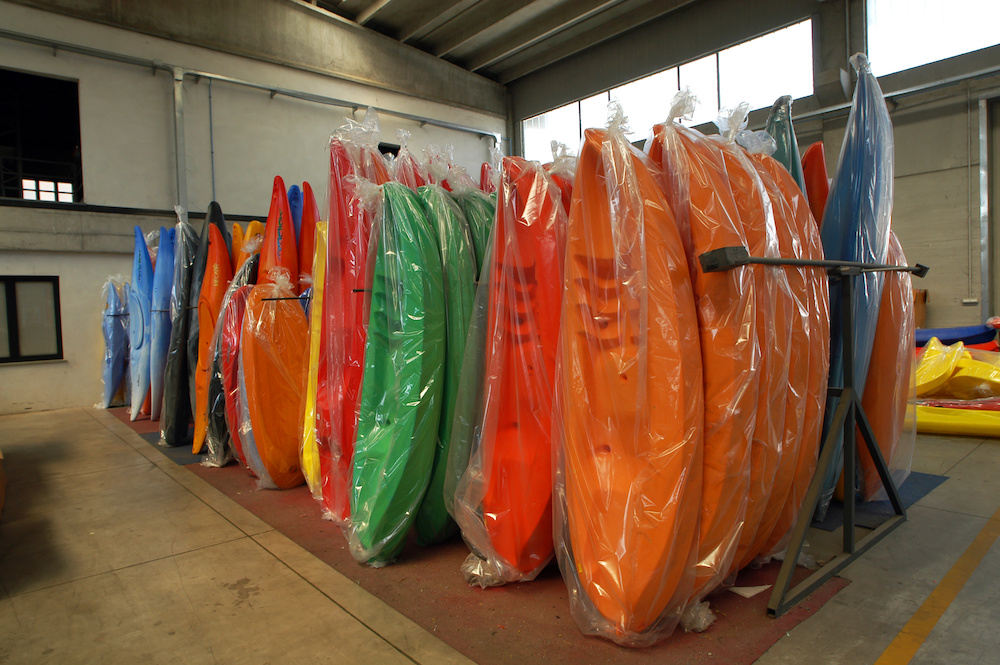How Much Is a Kayak?
We may earn a commission for purchases using our links. As an Amazon Associate, we earn from qualifying purchases.
While kayaking is not an outrageously expensive outdoor activity, it isn’t cheap either.
It’s normal to assume it is costly, though, considering the complex construction of a kayak and its many available accessories.
Plus, kayaks continue to evolve as manufacturers develop more features that allow you to do more dynamic water activities.
For these reasons, it’s no surprise that these advancements contribute to how much is a kayak.
To help you understand why it’s priced the way it is, let’s talk about kayaks in more detail.
Factors That Affect the Price of Kayaks
Unlike other products where the price relies heavily on the brand, kayaks do not follow that trend.
Instead, you’ll find several factors that contribute to how much it is.
Material
First, we’ll talk about the materials used to construct the kayak.
Generally, kayaks below $1,000 are made of polyethylene plastic or vinyl, which you will often find in touring and recreational models.
Many kayak manufacturers build their kayaks following the method known as rotational molding.
This technique entails heating the polyethylene material and then putting it into a mold or cast until it cools to the intended shape.
Rotational molding makes use of an extremely precise mold that needs regular monitoring between casts.
These requirements extend the production process and factor into the higher prices of kayaks.
This is especially true for kayaks that demand more complicated molds.
Besides plastic or vinyl, more materials are used to construct a kayak’s other components.
Seats, bungee cords, skegs, frames, mounts, and other components are indispensable parts that also need funds to produce.
More expensive kayaks employ materials other than polyethylene, such as fiberglass or carbon fiber.
These materials are more expensive to procure and require a more intricate process compared to polyethylene.
Features
When looking at kayak prices, you will see that the most expensive models have more features.
These can include pedal-driven systems, fishing rod holders, several storage options, numerous mounts, and other extras.
Another kayak feature that plays a significant role in its price is the seat.
Ergonomics, adjustability, cushioning, and functionality will be all factors in the quality of the seat.
In short, the more bells and whistles the kayak has, expect the price to be higher.
The less expensive versions, on the other hand, may have unimpressive qualities and appearance.
Even so, you can expect them to have the necessary components to operate a kayak.
Accessories
Many kayaks come with a plethora of extras.
If you’re new to kayaking, it’s a good idea to get a kayak that comes with everything you need to get started.
A kayak with plenty of included accessories will typically have a higher price than those with fewer.
These accessories usually include a paddle, dry bag, waterproof phone case, cockpit cover, and others.
For inflatable versions, a hand pump, repair kit, and storage bag are often included.
If you already have most of these kayaking essentials, there is no reason to buy a kayak that comes with a slew of extraneous add-ons.
Quality
Cheap kayaks often have an inferior plastic build that underwent little to no quality control.
Sadly, this makes the kayak more vulnerable to damage and wear, such as dents, punctures, and chips.
When durability is compromised, expect that the kayak will be a dust collector sooner than you realize, regardless of how many features it has.
On the other hand, many kayak manufacturers take pleasure in producing high-quality models that could last more than a few years, even a lifetime.
This aspect is the driving force for the price of kayaks, as the quality will ensure durability and safety.

How Much Is a Kayak?
When it comes to figuring out how much is a kayak, you’ll want to take a look at the different types and their average cost.
Recreational Kayak
Price Range: $200 - $800
Recreational kayaks are perfect for amateur paddlers who like to spend their time outdoors on calm waters.
Most models measure around 10 to 12 feet long, which may result in better maneuverability.
However, the trade-off for that mobility is lackluster tracking.
They generally feature a flatter and broader hull than most touring kayaks, which gives them more stability.
Recreational kayaks tend to drag more in the water due to their width, making them a tad slower than other types.
Fishing Kayak
Price Range: $300 - $1,800
Fishing kayaks are designed to deliver exceptional stability and durability.
As you can imagine, speed is not a priority because it’s not an essential component for catching fish.
This type of kayak usually includes a lot of storage space for fishing tackle, rod holders, mounting brackets for fishfinders, and other essentials.
Also, many fishing kayaks have multiple bottle holders, anchor lines, and extra space for more gear.
Some pricier models have a pedal-drive mechanism or even trolling motor mount to help you maneuver better in tough fishing spots.
Touring and Sea Kayak
Price Range: $1,000 - $2,000+
Touring and sea kayaks are the most costly kayak types in the market.
They typically measure longer than the other categories, so you can quickly identify a touring or sea kayak because of its long waterline.
These are necessary design choices to enhance tracking, which is essential when riding the sea waves.
Thanks to their length, there’s plenty of storage for multi-day or overnight trips, especially for experienced paddlers.
Additional distinct qualities of touring and sea kayaks are a narrow body and a lower seat, resulting in increased speed and efficiency.
Since touring and sea kayaks are longer, you will find that turning is more challenging.
Inflatable Kayak
Price Range: $100 - $1,000
Inflatable kayaks are popular among casual paddlers for their mobility and ease of use.
Plus, they also require less maintenance and are space-friendly.
You can use them in different water environments, making inflatable kayaks perfect for calm lakes, narrow creeks, and flowing rivers.
If you don’t take kayaking seriously and planning to do it only once in a while, you might want to try an inflatable kayak.
Whitewater Kayak
Price Range: $800 - $1,600
Whitewater kayaks feature a relatively small frame with an enclosed cockpit. As such, they are used on turbulent rivers.
Many kayaks under this category have a distinctive shape that makes maneuverability and navigation in violent currents possible.
Generally, whitewater kayaks are more expensive than standard recreational models, but they are still less costly than touring and sea kayaks.
How Much Should Used Kayaks Be?
If the price of a kayak you want exceeds your budget, you might want to try buying a secondhand one instead.
The price for a used kayak is usually determined by its age, condition, and current market value.
Typically, a secondhand kayak in good condition should cost at least 50 to 75 percent of its brand-new price.
However, some premium models will maintain their value better than others, particularly those made of high-quality materials.
If you’re considering a used kayak, look up the current pricing of a kayak first as if you were to purchase a new one.
Knowing the price of a new model allows you to immediately determine how close the used price is to the new pricing.
Surprisingly, many resellers offer their old kayaks near their original price, so it’s good practice to be updated on the current prices.
Should You Buy a Kayak?
Buying a kayak is not as straightforward as it seems, especially if you are just a beginner paddler.
Prices are also not necessarily inexpensive, even for those entry-level kayaks.
If you aren’t sure if kayaking is something for you, you might want to look at renting one first.
Not only does a rental kayak cost significantly less, but you can also get expert advice from the shop about which type of kayak suits you best.

